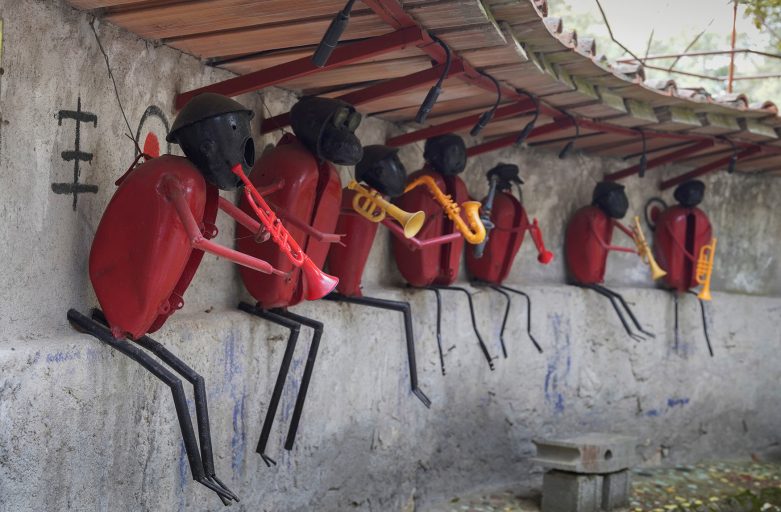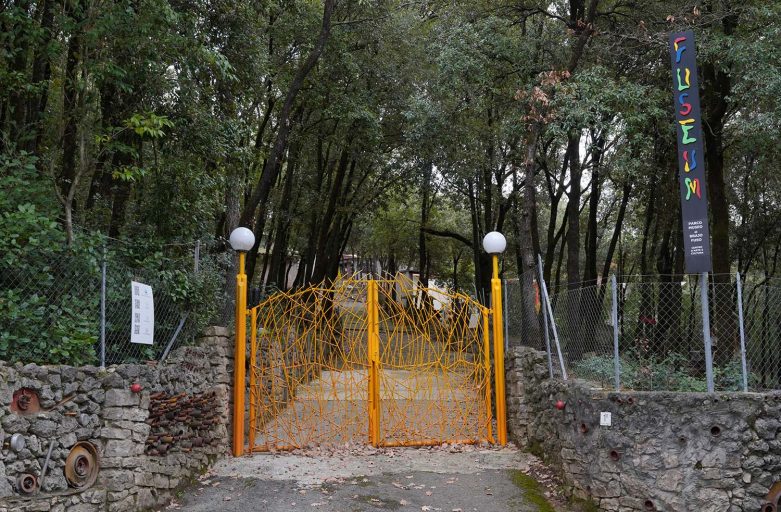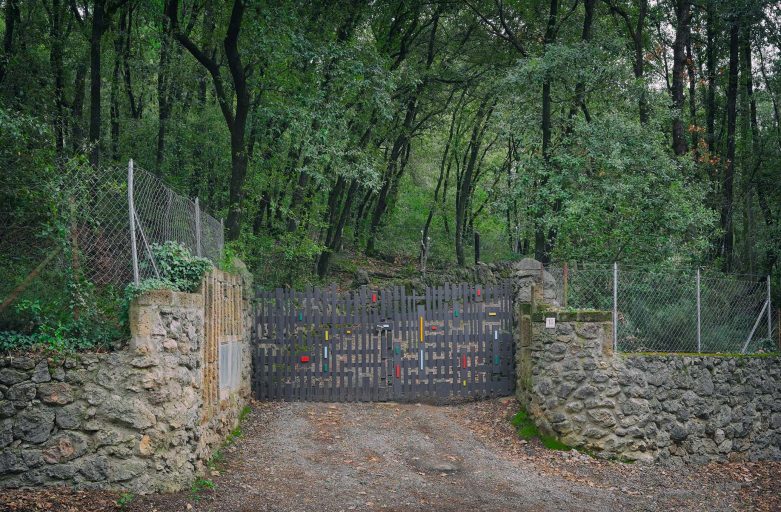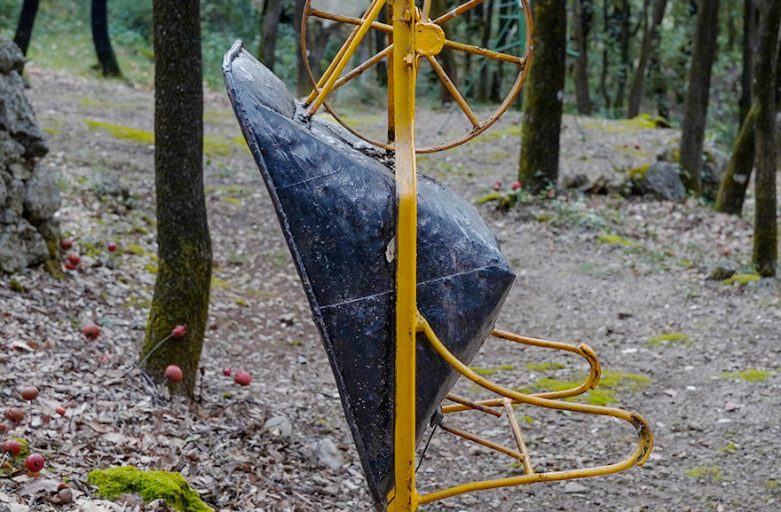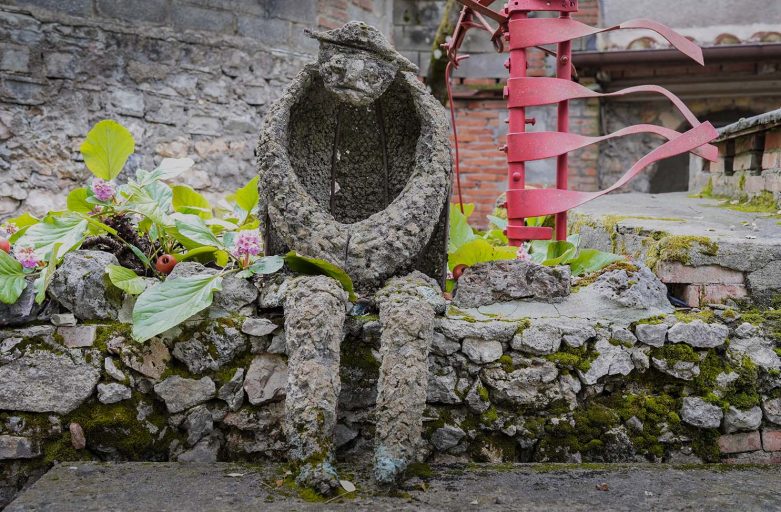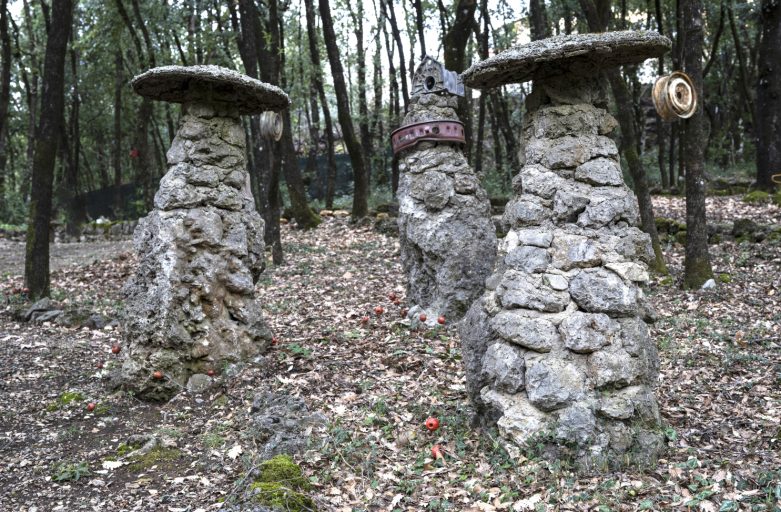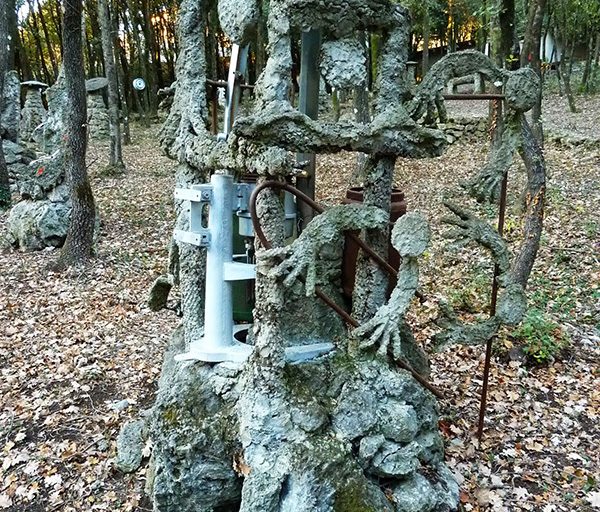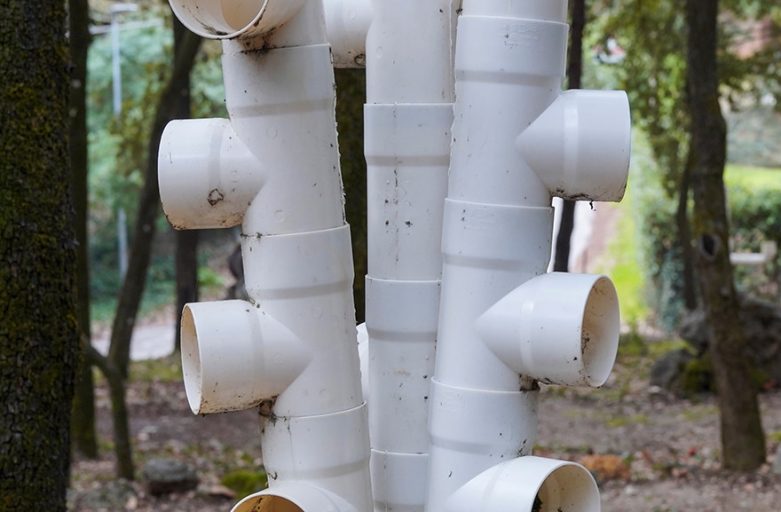Anthropomorfi, 1964
Tanks of old motorbikes turn into an orchestra of wind instruments. The creativity of Brajo Fuso makes the visitor feel free to identify with these characters. Suddenly, the location turns into a theatre where they improvise a lively show.
[audio src="/wp-content/uploads/2022/07/ENG_Antropomorfi-1964.mp3"]
